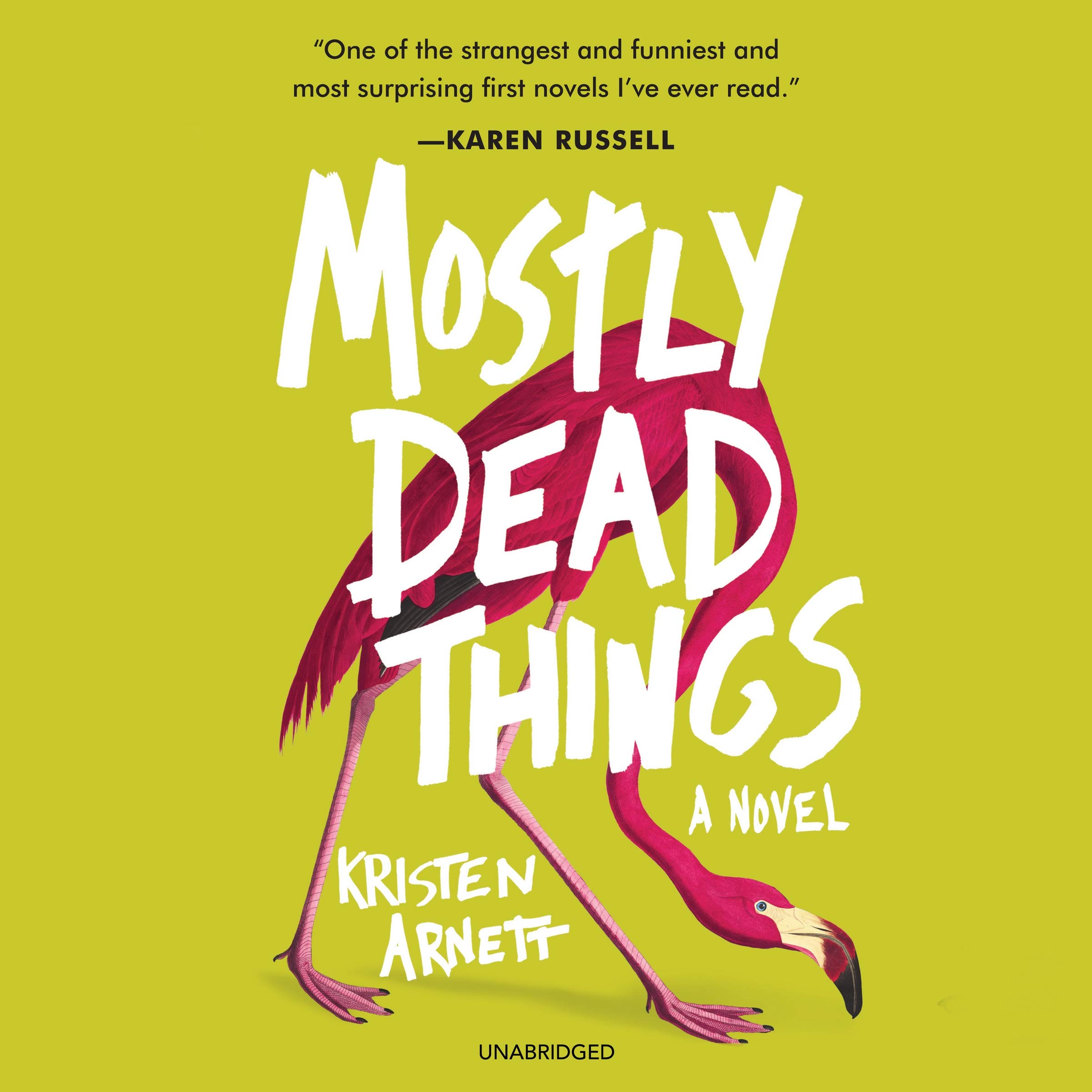
Carving Out a Life: A Review of Mostly Dead Things by Kristen Arnett
Words By Dana Benelli
Published June 4, 2019 by Tin House Books.
Mostly Dead Things is exactly what the title promises. In Kristen Arnett’s debut novel, a family of taxidermists in Florida are rocked to their core when the family patriarch suddenly commits suicide, leaving himself on one of the worktables. Deeply affected by their father’s death, eldest daughter Jessa steps up to take over the family business, struggling to manage debt and keep the family close—including both an absentee brother and a mother who’s begun to make suggestive poses with their taxidermy creations. Shockwaves of love and loss echo throughout the novel as Jessa reflects on her relationships with others—her father, a vanished lover, and a new mysterious flame. The novel takes us through Jessa’s efforts to hold everything together, and even more inexplicably, find a way forward through the gristle and mess of existence.
Readers of Arnett have anxiously awaited her first novel, and longtime fans will not be disappointed. Each page is rife with her trademark dark humor, spilling over at the edges with a wry voice. This book also builds on many of the themes present in her debut collection Felt in the Jaw: queer women, issues of intimacy, loneliness, and family. Arnett’s narration is as bleak as it is engaging, often using humor as a way to disarm the darkness. Jessa may be a traumatized, flawed human being, but her vulnerability sweeps the reader into her life, her inner thoughts giving fascinating insights into a person mired in different forms of unaddressed grief.
However, the real star of this book is the intense web of relationships between characters. The novel leans heavily into the drama that lurks within interpersonal relationships both romantic and platonic. Jessa’s dissatisfaction with her mother drives them to fight over her mother’s increasingly provocative and horrifying art projects. Jessa clashes with her brother’s comparatively timid personality and with her troubled niece and nephew, who become determined to gather fresh taxidermy material by any means possible. She strikes up a heated relationship with a woman named Lucinda Rex, but their romance may have disastrous consequences—especially when all these sparks ignite during Jessa’s mother’s art show.
In Mostly Dead Things, the critical mass of tragedy starts weird and never stops being weird, dipping often into gray areas and dynamics that polite society would prefer to ignore. For instance, Jessa and her brother share a tangled relationship with one woman, Brynn—married to the latter while sleeping with the former. But this novel’s strength lies in how it is unflinching in recognizing those realities. The content has a taste for the depressing, though that may indeed be the point. Messy and raw, readers are treated to a buffet of emotions and the never-ending push of trying to shape a life out of one more day.
Overall, Mostly Dead Things represents the confident foray of a skilled writer into a new format, carrying all her favorite themes with her. In many ways, the novel is a lot like the taxidermy subjects that mark its pages—somewhat unnerving at times, charmingly out-of-whack, a shuffling approximation of life, and a testament to death. But that in itself is what makes it so alluring. By the novel’s conclusion, Mostly Dead Things stands as an ode to the messiness of life, the ever-presence of loss, and how often the two are closely entwined.